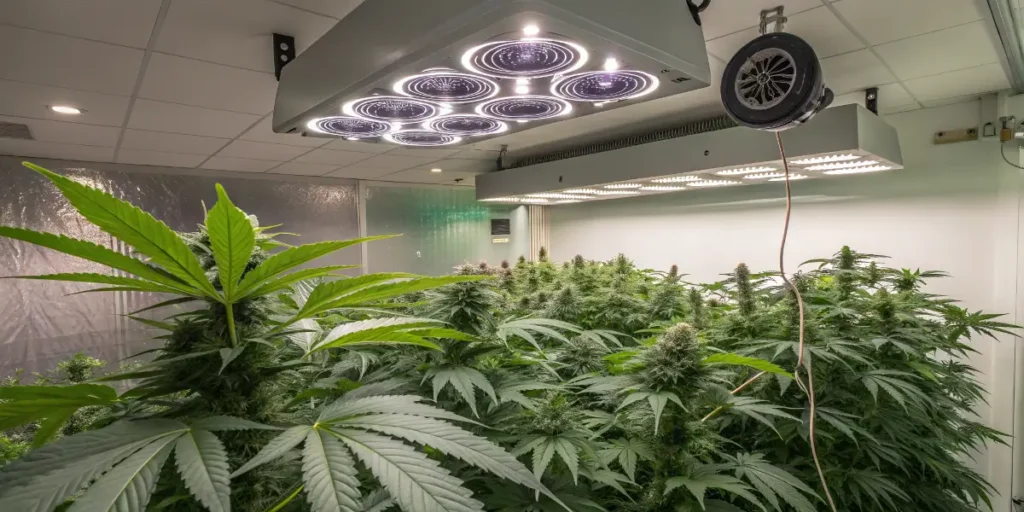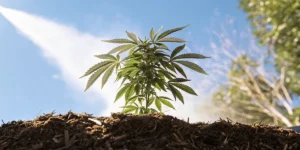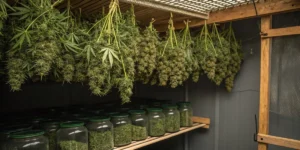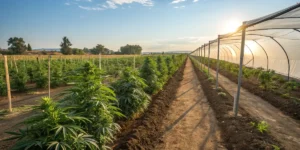Grape Ape, an indica-dominant strain known for its soothing effects and delightful grape aroma, is a favorite among cannabis enthusiasts. Growing this strain requires careful attention and an recognition of its specific needs to ensure a bountiful harvest. Whether you’re a novice or an experienced grower, this step-by-step guide will help you cultivate healthy, robust this strain plants. Start by obtaining quality seeds from a reputable source to ensure genetic integrity and optimal growth potential.
Begin with the right environment for your plants. This strain thrives in both indoor and outdoor settings, but controlling the climate is crucial. Indoors, aim for a temperature range of 70-80°F (21-27°C) with 40-50% humidity during the vegetative stage. Nighttime temperatures can be slightly cooler to simulate natural conditions. Adequate ventilation and air circulation are essential to prevent mold and pests, so invest in fans and air filters if necessary.
Choose an appropriate soil or hydroponic medium. For soil, select a well-draining mix, enriched with organic matter to provide essential nutrients. If you prefer hydroponics, ensure a balanced nutrient solution with a pH level between 5.5 and 6.5. Regardless of the medium, this strain benefits from regular feeding with a quality cannabis fertilizer regimen, adjusting nutrient levels based on the plant’s growth stage to maximize health and yield.
Light is a critical component for successful cannabis cultivation. This strain requires approximately 18 hours of light during the vegetative stage and 12 hours during flowering, mimicking natural seasonal changes. Use high-intensity lamps, such as LED or HPS, to provide sufficient light while managing energy consumption. Monitor plants closely and adjust the light distance to prevent heat stress or light burn, ensuring even and vigorous growth.
As your plants transition to the flowering stage, typically around 8 to 9 weeks, maintain optimal conditions by gradually reducing humidity to around 30-40% and slightly lowering temperatures. This helps to enhance resin production and the development of those signature purple hues. Regularly inspect buds for signs of mold and pests, and use organic remedies to protect your plants while preserving their quality.
Harvesting this strain at the right time is key to achieving its full potential. Watch for trichomes turning from clear to milky white with some amber, indicating peak potency. Carefully trim leaves and hang buds upside down in a dark, cool room with consistent airflow to dry. This curing process enhances flavor, aroma, and potency, rewarding you with top-quality buds perfect for relaxation and enjoyment.
grape ape Strain Overview: Traits, Effects & Genetics
Grape Ape is a renowned indica-dominant cannabis strain that has carved its niche in the cannabis community due to its distinct traits and effects. This strain is highly appreciated for its characteristic grape-like aroma, which is attributed to its terpene profile rich in myrcene and caryophyllene. The strain’s buds exhibit a stunning range of purples and greens, often accented by fiery orange pistils and a coat of crystal trichomes. The unique aesthetic of this strain, coupled with its aromatic allure, makes it not just a strain to consume but also one to admire.
When it comes to effects, this strain is well-regarded for its potent body relaxation properties, making it a go-to choice for those seeking stress relief or a means to unwind after a long day. As an indica-dominant strain, its sedative effects can promote a deep sense of calm, helping to alleviate pain and muscle tension. Users often report feelings of euphoria and a sense of mental tranquility without overwhelming couch-lock, allowing for a peaceful transition to sleep. This makes this strain an excellent option for evening use or as a nightcap.
The genetics of this strains are rooted in a well-curated blend of classic cannabis strains. It is a cross between three legendary strains: Mendocino Purps, Skunk #1, and Afghani. These genetic contributions have given this strain its resilient growth characteristics and robust effects. Mendocino Purps is renowned for its vibrant coloring and relaxing effects, while Skunk #1 adds a pungent aroma and increased yield potential. Afghani genetics provide this strain with its sturdy structure and enhanced resin production, making it a favorite among growers seeking a reliable and hardy plant. Together, these genetic components create a strain that boasts not only an appealing sensory experience but also a rewarding cultivation process.
Grape Ape’s cultivation appeals to growers due to its manageable height and consistent yield. It can be grown both indoors and outdoors, although it thrives in a controlled environment where temperature and humidity can be regulated to enhance its purple hues. With a typical flowering time of about 7 to 8 weeks,this strain rewards growers with dense, resinous buds that are as enjoyable to look at as they are to consume. Its resilience against pests and its vigor in development further add to its appeal for both novice and experienced cultivators alike.
Optimal Environment
Grape Ape, an indica-dominant strain known for its relaxing effects and distinctive grape aroma, requires a carefully controlled environment to thrive. Ensuring a suitable climate is the first step in cultivating a successful crop. This strain flourishes in a warm and sunny outdoor climate, typical of Mediterranean regions. However, for growers in less hospitable climates, indoor cultivation offers a reliable alternative. Maintaining a consistent temperature range between 70-80°F (21-27°C) during the day and slightly cooler temperatures at night is crucial in promoting healthy growth and bud production.
Humidity management is another critical aspect of cultivating this strain. As with many indica strains, this strain is susceptible to mold and mildew, especially during the flowering stage. Maintaining a relative humidity level of approximately 40-50% during the vegetative stage, and gradually lowering it to around 30-40% as the plant enters its flowering phase, can help prevent these issues. Good air circulation is essential in keeping humidity levels stable and ensuring the plants are less prone to developing fungal problems. Using fans and exhaust systems can aid in maintaining optimal conditions.
Light is a vital component of the growing environment, and ensuring Grape Ape receives sufficient illumination is pivotal. While outdoor plants benefit from natural sunlight, indoor growers need to replicate these conditions using grow lights. LED lights are recommended because they provide the full spectrum of light required for photosynthesis while generating less heat. For this strain, a light schedule of 18 hours of light and 6 hours of darkness per day during the vegetative stage, followed by 12 hours of light and 12 hours of darkness during the flowering stage, will promote optimal growth and yield.
Soil composition and nutrient management are equally important for cultivating healthy plants. A well-draining soil mix rich in organic matter, such as compost or worm castings, will provide the plants with the necessary nutrients. Moreover, implementing a balanced feeding schedule with a focus on nitrogen during the vegetative stage and a shift towards phosphorus and potassium during the flowering stage is vital for encouraging robust plant development and resinous bud production. Monitoring pH levels to remain in the range of 6.0-7.0 will also ensure nutrient absorption and plant health.
To sum up, the key to successfully growing this strain lies in creating an optimal environment that mimics its natural habitat. Careful attention to temperature, humidity, light, and soil conditions will help cultivate a healthy and bountiful crop of this popular cannabis strain. With the right setup, growers can enjoy a rewarding harvest of aromatic and potent Grape Ape buds.
Grow Room Setup for Grape Ape Plants
Setting up a grow room for Grape Ape cannabis plants requires careful attention to detail, as the environment substantially impacts the plant’s health and yield. This strain, known for its dense buds and soothing indica effects, thrives in controlled indoor conditions. It’s crucial to maintain an ideal temperature range of 68-80°F (20-27°C), as temperature fluctuations can stress the plants and affect their growth. Additionally, the humidity should be kept between 40-60% during the vegetative phase and lowered to 30-40% during flowering to prevent mold and mildew.
Lighting is another critical aspect of your grow room setup for this variety. This strain benefits from a combination of high-intensity discharge lamps, or more energy-efficient LED grow lights, ensuring that the plants receive adequate light for photosynthesis. During the vegetative stage, provide 18-24 hours of light to encourage vigorous growth, and switch to 12 hours of light and 12 hours of darkness to initiate and sustain the flowering stage. Remember to keep the lights at an appropriate distance to prevent light burn while ensuring the plants receive enough illumination.
Ventilation and air circulation are essential to maintain a healthy environment for this strain. Install fans and exhaust systems to keep fresh air circulating, preventing humidity buildup and promoting robust stem development. A carbon filter can be added to minimize the distinct odor that these plants emit. Additionally, ensuring a steady influx of CO2 will aid in faster and healthier plant growth, which can be achieved with CO2 tanks or natural supplementation methods.
When preparing the grow room, consider the space needed for this strain to reach its potential size. These plants can grow medium to large, requiring ample space for proper canopy development. Use reflective materials like Mylar on walls to maximize light distribution, helping the lower branches get sufficient light. Regular pruning and training techniques such as topping or low-stress training can also optimize yield and maintain an even canopy.
Lastly, the grow medium you choose can significantly influence your plants. This strain can flourish in both soil and hydroponic setups. If using soil, ensure it is rich in nutrients with good drainage. For hydroponic systems, closely monitor pH levels and nutrient concentrations for optimal growth. Regularly check and adjust pH levels to keep them in the ideal range of 6.0-6.5 for soil and 5.5-6.0 for hydroponics, ensuring the plants can effectively absorb nutrients.
Indoor Growing Tips for Grape Ape
This strain is a popular indica-dominant strain known for its relaxing effects and rich, aromatic profile reminiscent of sweet grape flavors. When cultivating Grape Ape indoors, growers must pay attention to several key factors to ensure a successful harvest. First and foremost, it is essential to create an environment that mimics the natural conditions this strain thrives in. A consistent temperature range of 68-77°F (20-25°C) during the day and slightly cooler nights helps spur optimal growth. Maintaining relative humidity levels between 40-50% during the vegetative stage reduces the risk of mold and mildew, which can be prevalent in dense buds like those of this strain.
Lighting plays a crucial role in indoor cannabis cultivation, especially for strains like this strain that benefit from strong illumination. Full-spectrum LED lights or high-pressure sodium (HPS) lamps provide the necessary intensity and spectrum to aid in vegetation and flowering. Keep the lights positioned approximately 18 inches above the plant canopy to ensure adequate light penetration. As Grape Ape matures, trimming lower branches and foliage can increase light exposure and airflow within the plant, reducing the likelihood of pest infestations and promoting overall plant health.
Nutrient management is equally vital when growing this strain indoors. This strain responds well to a balanced diet, rich in nitrogen during the vegetative phase, and increased phosphorus and potassium during flowering. Organic soil amendments such as bone meal, bat guano, and worm castings can enhance soil fertility and support robust growth. Regularly monitoring pH levels in both soil and water, aiming for a range of 6.0-6.5, will ensure nutrient availability and prevent common deficiencies that can affect yield and bud quality.
Considering Grape Ape’s relatively short stature and bushy growth pattern, providing adequate space between plants fosters better development and airflow. Techniques such as the ‘Sea of Green’ (SOG) method, which involves flowering multiple small plants rather than few large ones, can maximize yield in limited space. Regular practice of pruning and possibly employing humidity control tools like dehumidifiers further supports the plant’s wellness and enhances the quality of the resulting harvest.
Outdoor Growing Tips for grape ape
Grape Ape is a popular Indica-dominant strain known for its distinctive grape-like aroma and soothing effects. When cultivating this strain outdoors, it’s essential to take into account its unique requirements to ensure a bountiful harvest. This strain thrives in warm, Mediterranean-like climates with plenty of sunlight. Therefore, it’s crucial to plant after the last frost has passed to protect it from cold weather. To maximize sunlight exposure, choose a well-lit area where the plants can bask in direct sunlight for at least 6-8 hours daily.
Soil preparation is another vital aspect of successfully growing this strain outdoors. This strain benefits from nutrient-rich, well-draining soil to prevent waterlogging and root rot. Consider enhancing your soil with organic matter such as compost or well-rotted manure to provide essential nutrients and improve soil structure. Proper pH levels are paramount; aim for a pH of around 6.0 to 6.5 to create an optimal environment for nutrient uptake. Regularly testing and adjusting the soil pH can significantly enhance plant health and yield.
Watering and feeding are pivotal in the outdoor cultivation of this strain. While this strain can tolerate periods of drought, consistent watering during the growth cycle is crucial for optimal development. Be cautious to avoid overwatering, which can lead to root problems. Implementing a regular feeding schedule using quality organic fertilizers will support vigorous growth. Pay attention to the plant’s needs during the flowering stage, as this strain requires increased phosphorus and potassium to produce dense, resinous buds.
Pest and mold management is essential for a successful outdoor grow. This strain is susceptible to common cannabis pests like aphids, spider mites, and caterpillars. Regular inspections and the use of organic pest control measures can help combat infestations. Additionally, maintaining airflow around the plants by proper spacing and pruning can mitigate mold and mildew risks. An ounce of prevention is worth a pound of cure, so staying vigilant against potential threats is essential for thriving plants.
Proper training techniques can significantly enhance Grape Ape’s outdoor yield. Implementing low-stress techniques such as topping and pruning encourages robust lateral growth and allows better light penetration to lower branches. This approach helps in optimizing yield and ensuring even bud development. By monitoring weather conditions, providing a conducive environment, and adopting sound cultivation practices, growers can succeed in reaping the rich rewards of this delightful strain when cultivated outdoors.
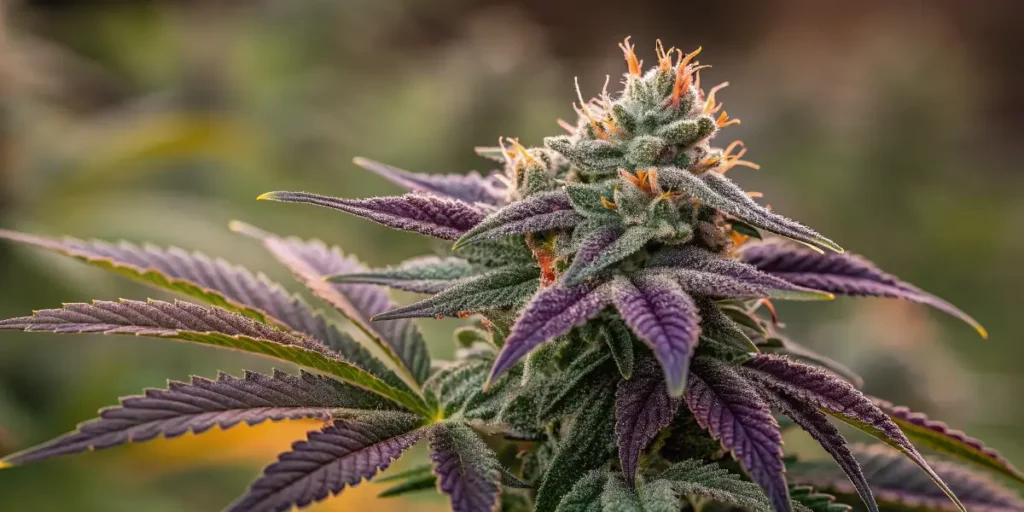
How to Germinate & Propagate Grape Ape
Grapes Ape is a popular cannabis strain known for its strong, relaxing effects and its grape-like aroma. To start cultivating this strain, the germination process is the first critical step. Begin by selecting high-quality seeds from a reputable supplier to ensure the health and potency of your plants. Opt for seeds that are dark brown and hard, which are signs of maturity. The paper towel method is a reliable and simple technique for cannabis seed germination. Place seeds between two moist paper towels, ensuring they remain damp but not overly wet, as excess water can lead to rot.
Maintain a consistent temperature of around 70-85°F (21-29°C) in a dark environment to facilitate root development. It is crucial to check on the seeds daily and keep the paper towels moistened if necessary. Typically, this strain seeds take anywhere from 24 hours to a week to sprout. Once you observe a small, white root—known as a taproot—emerging from a seed, it indicates successful germination, and it is time to transfer the seedlings to a growing medium such as soil or a hydroponic system.
After planting the germinated seeds, propagation becomes the focus. This plants thrive in nutrient-rich soil with good drainage and a pH level between 6.0 and 6.8. During the seedling stage, maintain a temperature around 70-75°F (21-24°C) and use fluorescent or LED grow lights to provide 18 hours of light per day. Adequate air circulation is essential to prevent mold growth, which can damage plants. As the seedlings develop, keep an eye on their growth rate and check for any signs of nutrient deficiency or disease.
To propagate this strain beyond seeds, cuttings from a healthy mother plant can be employed. Choose a stem with a few nodes and use a sterile blade to make a clean cut. Immediately place the cutting into a rooting hormone to enhance root development, then plant it in a light, well-draining propagation medium. Keep the cuttings in a humid environment, under indirect light, until roots establish themselves, usually in 1-2 weeks. Regular monitoring and gentle care will support the cuttings as they establish themselves and eventually grow into robust Grape Ape plants.
Vegetative Stage: Nurturing Your grape ape Plants
The vegetative stage of the Grape Ape cannabis plant is a critical period where growers have the opportunity to set the foundation for a healthy and abundant yield. During this stage, which typically lasts between three to six weeks, the plants focus on developing a robust root system and lush foliage. To nurture your plants effectively, it is essential to provide the right balance of nutrients. Opt for a high-nitrogen fertilizer, as nitrogen is crucial for promoting leafy growth and supporting the metabolic processes necessary for vigorous plant development. Additionally, ensure that your plants receive sufficient light to encourage photosynthesis and healthy growth.
Lighting plays an integral role in the vegetative stage. For this plants, which thrive under optimal conditions, providing 18 to 24 hours of light per day replicates the long summer days in nature and stimulates consistent growth. While natural sunlight is excellent, many indoor growers use fluorescent or LED grow lights to deliver the necessary light intensity. LED lights, in particular, are efficient and emit less heat, reducing the risk of burning the leaves. Position the lights approximately 18 inches above the plant canopy to prevent light burn while ensuring ample coverage.
Aside from light and nutrients, maintaining an ideal environment for your plants is vital during the vegetative stage. Aim to keep the temperature between 70-85°F (21-29°C) with a relative humidity of about 40-70%. Proper ventilation is also crucial, as it helps control temperature and humidity, and reduces the risk of pest infestations and mold. Utilizing oscillating fans ensures even air movement throughout the grow area, promoting strong stem development. Additionally, regular pruning and trimming of lower leaves can enhance air circulation and energy allocation, directing growth to the tops for bigger and bushier Grape Ape plants.
Watering your plants correctly during the vegetative phase is important for their vitality. Overwatering can lead to root rot, while under-watering may stunt growth or cause nutrient deficiencies. Employ a regular watering schedule, allowing the top inch of the soil to dry out between watering. If growing in soil, check the mixture’s drainage capacity, and adjust the water pH level between 6.0 and 7.0 to facilitate optimal nutrient uptake. Observing your plants for signs of stress or deficiencies, such as yellowing leaves or drooping, can guide your adjustments in care practices.
Flowering grape ape: What to Expect
Grape Ape, an indica-dominant strain recognized for its deep purple hues and grape-like aroma, is cherished among cultivators for its robust structure and abundant yield. As the plant enters the flowering stage, growers can expect a transformation characterized by the blossoming of compact, dense buds covered in a generous layer of resinous trichomes. This strain thrives in both indoor and outdoor environments, with indoor flowering typically initiating around eight weeks. This stage is essential for realizing the strain’s renowned potency and flavor, demanding attentive care and optimal growing conditions.
During the flowering stage, cultivators should maintain a warm climate with temperatures ranging from 68°F to 80°F (20°C to 27°C), coupled with a relative humidity level between 40% and 50%. Proper climate control ensures the avoidance of mold and bud rot, particularly important for this strain due to its dense bud structure. In terms of lighting, transitioning to a 12/12 light schedule is crucial to stimulate flowering. Adequate lighting not only supports photosynthesis but also enhances the aromatic and colorful characteristics of the strain, revealing its signature deep purples and blues.
Nutrient management is pivotal during Grape Ape’s flowering phase. While the plant will benefit from increased phosphorous and potassium, it is essential to reduce nitrogen levels to prevent growth issues that can delay or alter the flowering process. Regular monitoring and adjustment of pH levels in the growing medium will aid in the absorption of these essential nutrients, promoting healthy bud development. Pruning excess foliage can also help improve air circulation and light penetration, further amplifying the plant’s yield potential.
As the flowering phase progresses, growers can expect this strain to exude a sweet, grape-like aroma that intensifies with maturity. Observing trichome coloration is critical for determining the optimal harvest time; milky white trichomes with a hint of amber signify peak potency and flavor. Upon reaching this phase, harvesting should be performed with care to avoid damaging the delicate trichomes, ensuring that the final product retains its revered quality and efficacy.
Fertilizers & Nutrient Schedule
Grape Ape is an indica-dominant cannabis strain known for its robust purple buds and fruity flavor profile. To maximize its potential, providing the right nutrients during its growth stages is essential. Start with a well-draining soil mix that contains organic materials, which can provide some initial nutrients. Keep in mind that this strain, like many cannabis strains, thrives with a feeding schedule tailored to its life cycle stages, ensuring it receives the proper nutrient ratios during its vegetative and flowering phases.
During the vegetative stage, focus on providing nutrients that support strong stem and leaf development. Employ a nitrogen-heavy fertilizer to encourage vigorous growth, with macronutrient ratios favoring N-P-K at about 3-1-2. Micronutrients such as calcium, magnesium, and iron are also pivotal in this stage. It’s advisable to monitor the pH of the water and nutrient solution, keeping it between 6.0 and 6.5 to ensure that the roots can properly absorb these nutrients.
As you transition into the flowering phase, adjust your nutrient focus to support bud development. Decrease nitrogen levels while increasing phosphorus and potassium, with an ideal N-P-K ratio of around 1-3-2. This shift ensures that the plant can develop dense, resinous buds. A bloom booster can also be beneficial to enhance flower production. Be vigilant about avoiding nutrient burn by gradually adjusting concentrations and regularly flushing the medium to prevent salt buildup.
Maintain a consistent feeding schedule, typically watering and feeding every other day or as dictated by the plant’s specific needs, to prevent over or underfeeding. The key to a successful Grape Ape harvest lies in observing the plant’s response to the nutrient schedule and being ready to adapt as necessary. Regular inspection of the leaves and overall plant health will guide you in making any required adjustments to feed the plants effectively.
Pest and Disease Prevention for Healthy Cannabis Plants
Growing Grape Ape cannabis can be a rewarding experience, offering growers a chance to cultivate a strain known for its sweet grape taste and calming effects. However, like any cannabis plant, this strain is susceptible to various pests and diseases that can hinder its growth and reduce yield. To ensure a healthy crop, it is crucial to implement proactive pest and disease prevention strategies. This section will examine some effective methods to protect your plants from common threats.
One of the first steps in pest and disease prevention is maintaining a clean and controlled growing environment. This plants thrive in conditions where humidity and temperature are consistently monitored. High humidity levels can promote the growth of molds and mildew, while unstable temperatures can stress plants, making them more susceptible to pests like spider mites and aphids. Utilizing dehumidifiers and fans can help regulate these factors, creating an inhospitable environment for pests and diseases.
Implementing an integrated pest management (IPM) system is also crucial for keeping Grape Ape plants healthy. An IPM approach emphasizes prevention over reaction, combining cultural, physical, and biological controls. Regularly inspect plants for early signs of pests or diseases, such as yellowing leaves, webbing, or unusual spots. Introducing beneficial insects, like ladybugs and predatory mites, can naturally control pest populations without the need for harsh chemical treatments.
Companion planting can serve as another effective strategy for pest prevention. Certain plants, such as marigolds and basil, can deter pests while providing a symbiotic environment for Grape Ape cannabis. These companion plants can act as natural repellents and should be strategically placed around cannabis plants to enhance protection. Additionally, ensure there’s adequate spacing between plants to promote airflow and reduce the risk of mold and mildew development.
Using organic pest control methods can help manage pest populations without damaging your plants. Neem oil spray, diatomaceous earth, and insecticidal soap are excellent non-toxic options that can effectively reduce pest numbers while keeping your plants chemical-free. Remember that prevention is always better than cure, so periodic application of these solutions as a preventive measure can further secure your plants against infestations.
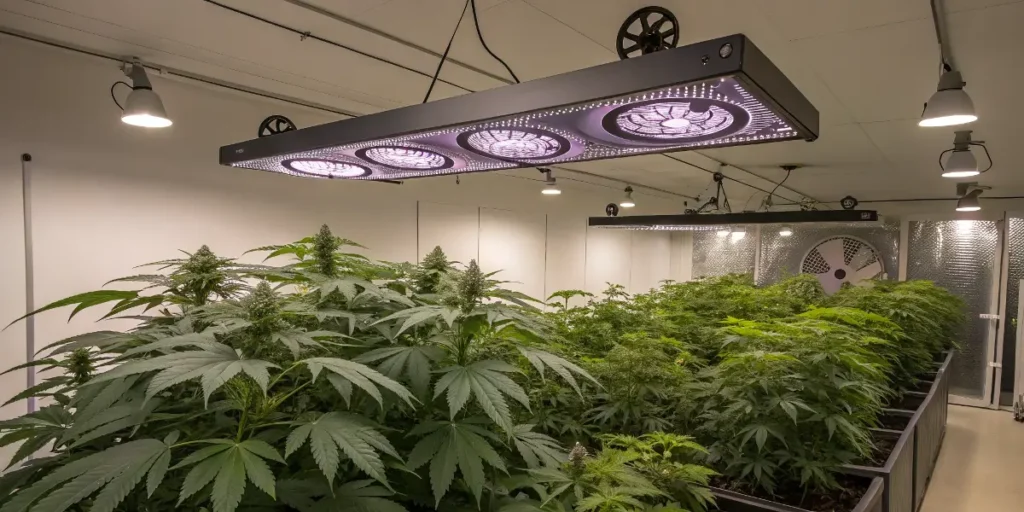
Harvesting & Drying
Harvesting this strain at the optimal time is crucial for maximizing its unique terpene profile and potency. Grape Ape, an indica-dominant strain known for its aromatic grape flavor, typically exhibits a flowering period of about 7 to 8 weeks. Monitoring trichomes is the best way to determine the right time to harvest. When the trichomes transition from clear to milky white, and a few are turning amber, it’s the ideal time to harvest to ensure a balance between a heady high and a body buzz.
Begin the harvesting process by carefully trimming the larger fan leaves, which makes the drying process more efficient and cleaner. Using sanitized, sharp scissors is essential to prevent any damage to the plant and ensure cleanliness. Cut the branches with buds from the main stem, leaving enough space to maneuver and handle them easily. It’s important to handle the buds gently throughout the process to preserve their delicate structure and cannabinoids.
After harvesting, drying this strain properly is crucial to maintaining its rich cannabinoid profile and preventing mold. Hang the trimmed buds upside down in a dark room with a temperature of about 21°C (70°F) and humidity levels around 50-60%. Good airflow is important, so ensure the space is well-ventilated without exposing the buds to direct light or excessive heat, which could degrade the cannabinoids and terpenes.
The drying process typically takes about 7 to 10 days. Once the smaller stems snap instead of bending, it’s time to move the buds into glass jars for curing. This process can make a significant difference in flavor and potency. Open the jars daily for the first couple of weeks to let excess moisture escape and prevent mold development. By following these guidelines, you can ensure that your Grape Ape harvest is as flavorful and potent as intended.
grape ape Strain Type: Indica, Sativa or Hybrid?
Grape Ape is primarily an Indica strain, celebrated for its deeply calming and relaxing effects. Originating from a cross of Afghani, Mendocino Purps, and Skunk, it exhibits many of the classic characteristics associated with Indica strains. The genetics of this strains are heavily inclined towards producing the body-heavy effects that are typically desired for relaxation and stress relief. This makes this strain a popular choice for those seeking to unwind in the evening or find a natural aid for managing anxiety and sleep disorders.
The Indica dominance of Grape Ape is evident not only in its relaxing effects but also in its growth characteristics. It typically grows shorter and bushier than its Sativa counterparts, making it ideal for indoor gardening setups where space might be limited. The lush, dense buds exude a grape-like aroma, which contributes to its name and appeal. Indicas like this strain generally have a shorter flowering time compared to Sativas, offering harvest-ready results in approximately 7 to 8 weeks, which is a factor appealing to growers looking for efficiency.
While its Indica roots are dominant, there are subtle hints of Sativa influences present, especially noticeable in the slightly uplifted mood it can provide. However, this is not enough to classify this strain as a Hybrid; it remains a pure Indica strain in its core effects and growth patterns. This slightly mood-elevating quality makes it uniquely popular among indica lovers looking for a hint of happiness to accompany the relaxation, but who do not wish for the cerebral intensity that comes with a true Sativa-heavy strain.
To sum up, this strain remains firmly within the Indica family. Its ability to invoke a powerful sense of calm and comfort aligns it strongly with typical Indica characteristics, meeting the expectations of those seeking an effective way to relax. The subtle Sativa nuances, while present, serve only to enhance its primary attributes without detracting from its Indica identity. This makes it a particularly appealing strain for both novice and seasoned cannabis enthusiasts interested in the soothing side of the cannabis spectrum.
Why Grow Grape Ape? Key Benefits for Cultivators
Grape Ape is a highly acclaimed indica-dominant cannabis strain, valued by cultivators for its robust growth and abundant yields. Its distinct grape-like aroma, coupled with a potent relaxing effect, makes it a favorite among consumers, ensuring a steady demand in the market. Cultivators benefit from the strain’s relatively short flowering period, which ranges from seven to nine weeks, allowing for multiple harvests within a year. This efficiency contributes to its appeal, as quicker turnover rates can enhance profitability and allow growers to adapt to market changes swiftly.
One of the primary advantages of growing this strain is its compact structure, which is highly beneficial for both indoor and outdoor cultivation. Indoors, the plant’s bushy nature allows it to fit within limited spaces, making it ideal for small grow rooms or clandestine operations where discretion and space optimization are crucial. Outdoors, its resilience against varying weather conditions and common pests makes it a hassle-free choice, reducing the need for extensive care and resources, thus lowering the overall cost of cultivation.
The strain’s popularity is also driven by its therapeutic benefits, which attract a broad consumer base seeking relief from stress, pain, and insomnia. This opens up diverse marketing opportunities for cultivators, allowing them to tap into both recreational and medicinal markets. Grape Ape’s high resin production is an added benefit for those interested in extraction, as it yields concentrates of exceptional quality. Its distinctive flavor profile and potent effects not only delight users but also create a loyal customer base, ensuring a sustainable and growing demand.
Additionally, Grape Ape’s aesthetic appeal, with its deep purple hues and frosty white trichomes, makes it an attractive choice for growers looking to produce visually appealing and marketable buds. The strain’s reputation and proven genetics give growers confidence in consistent quality and yield, making it a reliable staple in any cultivation operation. As a result, this strain continues to be a preferred choice among cultivators seeking a balance of quality, efficiency, and profitability.
Potential Challenges
Growing this strain comes with its unique set of challenges that cultivators need to be aware of to ensure a successful harvest. One notable challenge is the plant’s sensitivity to mold and mildew. Due to its dense bud structure, this strain is particularly susceptible to these issues, especially in humid environments. To mitigate this risk, it is essential to maintain proper air circulation within the grow space. Using oscillating fans and ensuring adequate spacing between plants can significantly help in reducing humidity levels and preventing mold growth.
Another potential challenge is managing the height and growth structure of the plant. While this strain typically remains short to medium in height, its bushy nature can lead to overcrowding if not properly managed. Cultivators should regularly prune the lower branches to improve light penetration and airflow through the canopy. Implementing techniques such as topping or low-stress training (LST) can also help control plant height and optimize the growth space, ensuring that all parts of the plant receive sufficient light to develop healthy buds.
The nutrient requirements of this strain can be another point of concern for growers. This strain is known for its voracious nutrient appetite, particularly in the flowering phase. Providing an adequate balance of nutrients, especially phosphorus and potassium, is crucial during this stage to support bud development and potency. However, over-fertilization can lead to nutrient burn, so it is important for growers to monitor the plant’s reaction to feeding and adjust nutrient levels accordingly. Regularly checking for signs of nutrient deficiencies or excesses will ensure that the plant remains healthy throughout its growth cycle.
Pest control can present a challenge when growing this strain. Like many cannabis strains, Grape Ape is susceptible to common pests such as aphids, spider mites, and whiteflies. Implementing integrated pest management (IPM) strategies, such as introducing beneficial insects like ladybugs or using organic pest control products, can help keep pest populations under control. Regularly inspecting plants for any signs of pest activity and taking immediate action at the first sign of infestation can prevent larger problems down the line and ensure a successful harvest.
Here’s What You Need to Know
this strain is a popular and intriguing cannabis strain known for its distinctive fruity aroma and calming effects. Developed by crossing Mendocino Purps, Skunk, and Afghani, this indica-dominant hybrid has garnered significant attention among cannabis enthusiasts. One of the key features that make this strain appealing is its potent relaxation properties, which can be beneficial for individuals dealing with stress, anxiety, and insomnia. The vibrant purple buds and sweet, grape-like aroma also contribute to its allure, making it a popular choice for both recreational and medicinal users.
When considering whetherthis strain is worth purchasing, it’s important to weigh its benefits against your personal preferences and needs. For medicinal users, Grape Ape’s ability to alleviate pain, reduce stress, and improve sleep can be particularly valuable. Recreational users, on the other hand, may be drawn to its unique flavor profile and body-centric high that promotes relaxation without causing excessive sedation. However, those seeking a more energetic or cerebral experience may find this strain lacking in terms of mental stimulation. It’s crucial to consider these aspects to make an informed decision that aligns with your desired cannabis experience.
Additionally, for individuals interested in cultivating their own cannabis plants, Grape Ape presents some attractive characteristics. It is known to be a robust strain, capable of thriving in both indoor and outdoor environments with proper care. The plant’s relatively short flowering time of 7 to 8 weeks makes it an appealing choice for growers looking for a quick turnaround. Yet, it is important to note that cultivating this strain may require careful attention to maintain its vibrant coloration and optimal resin production. Prospective growers should be prepared to manage specific growing conditions to ensure the successful cultivation of high-quality plants.
This strain can be a worthwhile investment for both users and growers due to its potent effects, unique flavor, and manageable cultivation requirements. Its ability to provide a deep sense of relaxation coupled with its delightful aromatic profile makes it a favorite among many cannabis connoisseurs. Whether you’re seeking relief from stress or looking to enhance your personal cannabis collection, Grape Ape offers a distinct experience that may align with your desires. Conduct thorough research, evaluate your needs, and consider seeking guidance from a dispensary professional to ensure that this strain is the right fit for you.
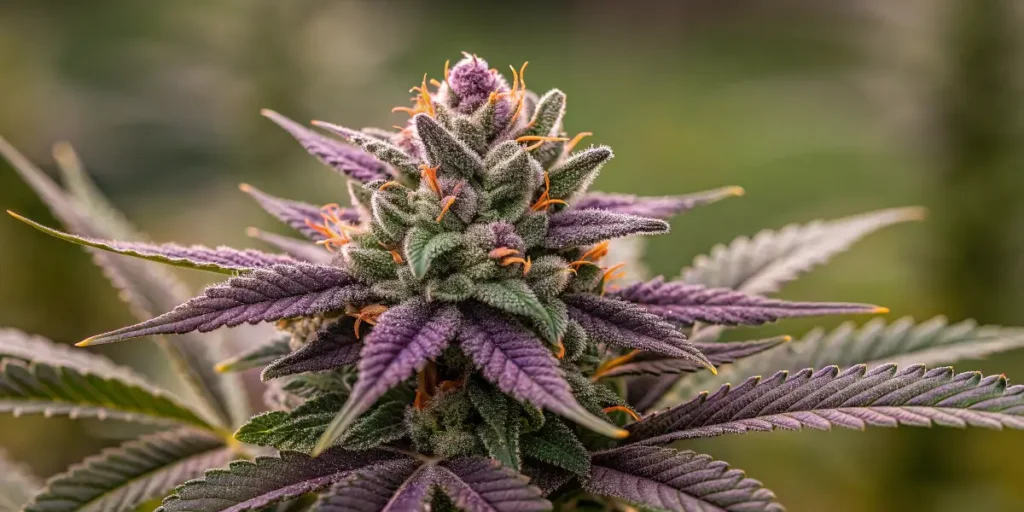
FAQs about Grape Ape
What is Grape Ape?
Grape Ape is a term that can refer to several things, but it is most commonly known as a hybrid cannabis strain. The strain is known for its distinct grape-like aroma and taste, as well as its calming and relaxing effects. It’s a popular choice among cannabis users seeking stress relief and relaxation without heavy sedation. Though the term originally referenced a character from a cartoon in the 1970s, in today’s context, it’s primarily associated with this particular cannabis strain.
What are the effects of the Grape Ape strain?
Grape Ape provides users with a unique blend of effects due to its hybrid nature. Generally, users report feeling a sense of euphoria followed by deep relaxation. It’s known to have a substantial calming effect on the body and mind, often leading to sleepiness. This makes it a popular choice for those suffering from insomnia or chronic pain. However, the initial euphoric high can also aid in stress and anxiety relief.
What are the origins of Grape Ape?
Grape Ape is an indica-dominant strain developed by combining Mendocino Purps, Skunk, and Afghani. This mixture of genetics contributes to its characteristic grape aroma and flavor, as well as its potent effects. The strain’s development initially aimed to combine the best properties of each parent strain, resulting in a product prized for its therapeutic effects and vivid grape taste, catering to enthusiasts of both indica and hybrid strains.
How should Grape Ape be consumed for best results?
Like most cannabis strains, Grape Ape can be consumed in several ways, including smoking, vaping, and edibles. For immediate effects, inhaling via smoking or vaping can be effective. It’s essential to start with a small amount, especially for newcomers, to gauge tolerance. Many users prefer using Grape Ape in the evening or before bedtime due to its relaxing and sleep-inducing properties. Individuals exploring edibles should be patient, as the onset of effects can take longer before manifesting.
What are the potential side effects of Grape Ape?
While Grape Ape is generally well-tolerated, it can have some adverse effects, particularly for those who are less experienced with cannabis. The most commonly reported side effects include dry mouth, dry eyes, and dizziness. Some people may also experience headaches or feelings of paranoia, especially if consumed in large amounts. To mitigate these effects, users are advised to start with a lower dose and stay hydrated. As with all cannabis products, individual reactions can vary, so mindful consumption is recommended.

